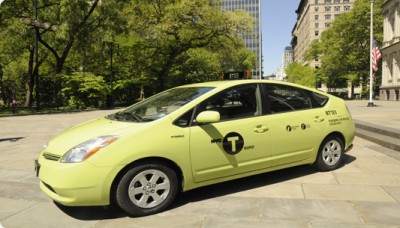Green taxis continue trek into outer boroughs

Photo courtesy of NYC.gov.
The past few months have seen green taxis slowly make their way through the “outer boroughs” of Brooklyn, Queens, the Bronx and Staten Island, and in Manhattan north of East 96th and West 110th Streets.
There are 2,035 green taxis—35 of them wheelchair-accessible vehicles—on the road now and all of this year’s allotted 6,000 permits and 141 taxi base endorsements had been sold by November 8.
This and other data was released in a presentation from the NYC Taxi and Limousine Commission (TLC) about the progress of the Five Boro Taxi Plan, approved on June 6 by the state Court of Appeals following opposition from TLC Commissioner David Yassky and others, who considered the plan to be a threat to non-city livery cab drivers.